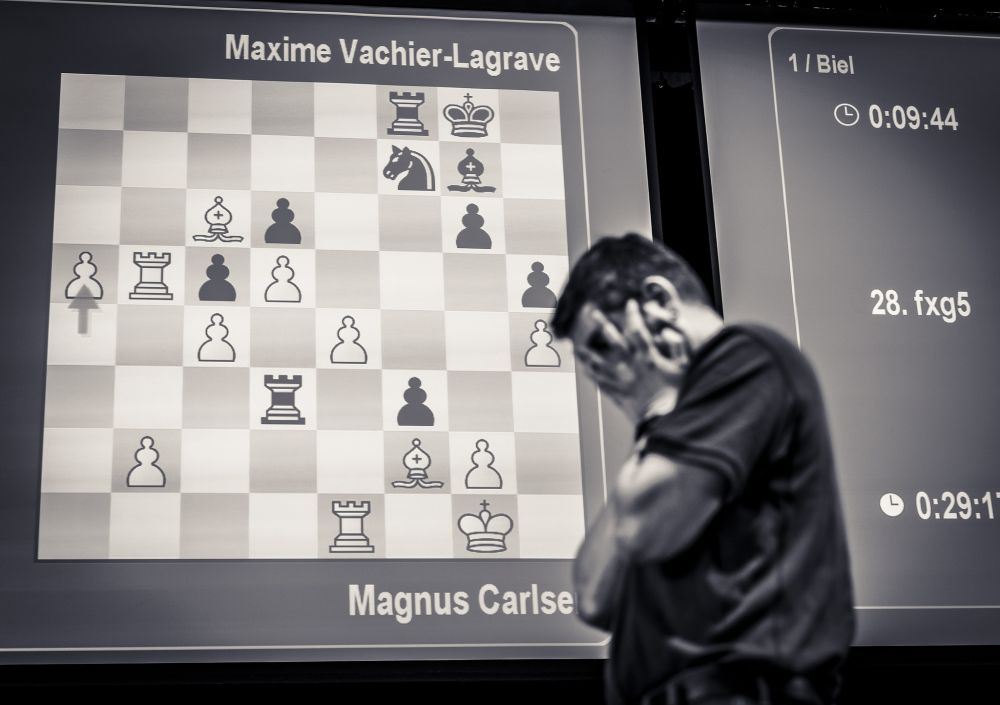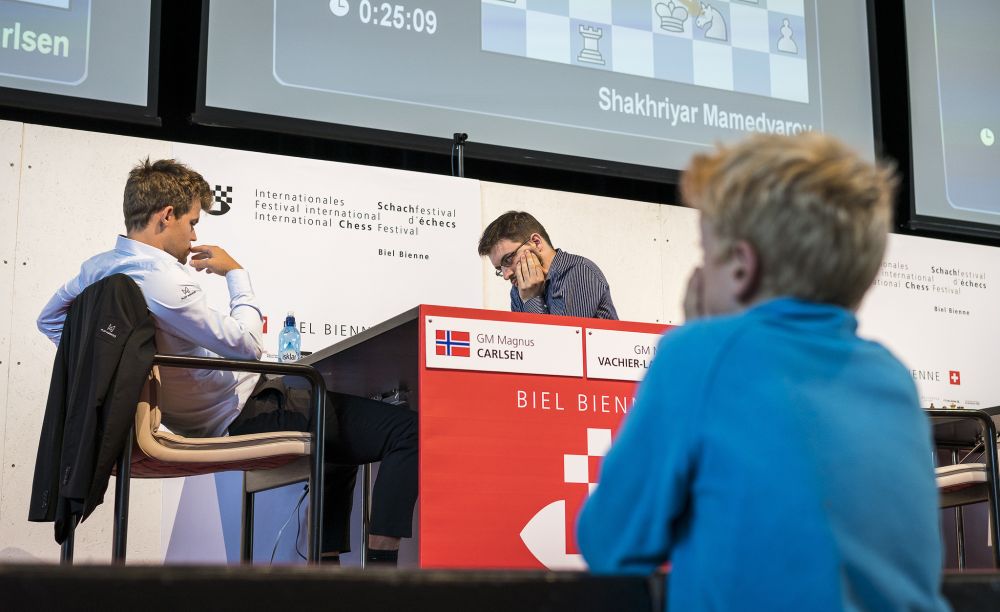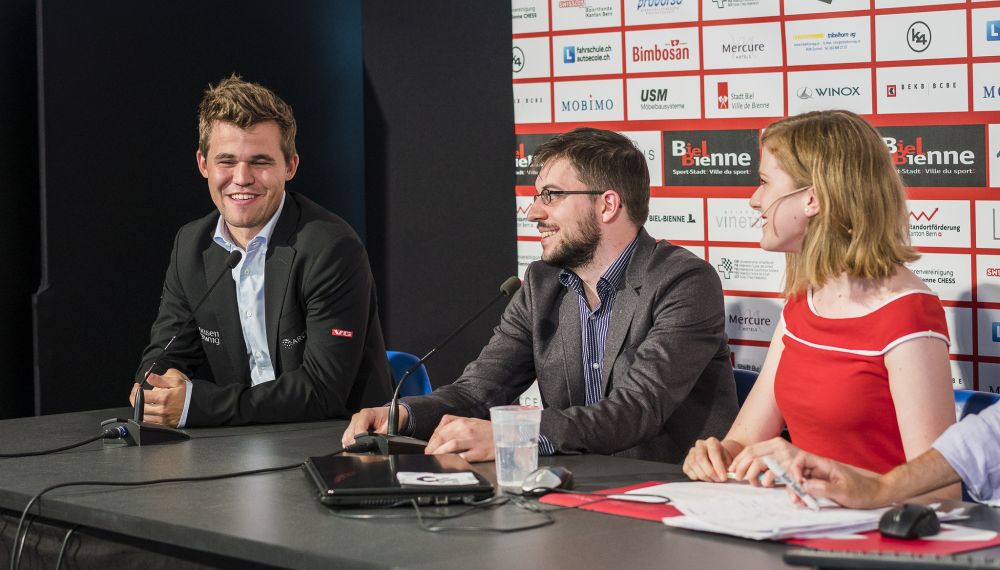


The spectators experienced a kind of déja vu: Peter Svidler arrives in the press conference, explains repeatedly that he has no idea about the modern lines of the Najdorf, and nonetheless shows great intuition in the sharp positions that arise. Yesterday, he showed he has what it takes to face these complex lines.

Svidler is not to be trusted when he says he does not know Najdorf theory | Photo: Lennart Ootes / Simon Bohnenblust / Biel International Chess Festival
While Magnus Carlsen tried to sacrifice a piece twice in his game against Svidler in round three, Nico Georgiadis threw the kitchen sink against the Russian's position. The Swiss grandmaster created dangerous threats, but Svidler's king found the way to escape and Black's material advantage gave him the victory at the end. And he knows no theory!
In contrast, Vachier-Lagrave's choice to play the Najdorf was not surprising at all. After all, he and Radoslaw Wojtaszek are the only players at the top that play this line almost exclusively when they decide to go for the Sicilian. Carlsen did not repeat the Bg5 variation that he had used earlier in the event, but went for the English Attack with 6.f3. MVL stopped White's attack with 8...h5 and gained the initiative on the kingside.

A Najdorf expert, Maxime Vachier-Lagrave | Photo: Lennart Ootes / Simon Bohnenblust / Biel International Chess Festival
Meanwhile, Carlsen improved on the queenside. After Black's 30th move, White is a pawn up, but Black has four pieces on the attack against the king. With 31...f3, Vachier-Lagrave opened more lines against White's monarch.
Carlsen was in deep trouble, despite the fact that he had everything under control a few moves earlier. He attacked the knight with 32.h4 and here MVL missed a big chance to defeat the World Champion. He could have played 32...Rd2, but after 33.hxg5 fxg2 34.Be3 he did not see that 34...Rc2 is winning. We cannot blame the French player for not seeing such a subtle move. After all, if we give a quick look at the position after this move, it is hard to imagine that Black's attack is decisive.
The main motif is rather hidden. The idea is 35...Be5 followed by 36...Rf1+ 37.Rxf1 Bh2+!, deviating the king to promote the g-pawn. Chess is difficult.

Carlsen's fans had reasons to look worried | Photo: Lennart Ootes / Simon Bohnenblust / Biel International Chess Festival
Vachier-Lagrave retreated with the knight instead, but he still had good chances of winning. Carlsen rushed his a-pawn to the promotion square, while MVL took his knight to the e5-square. Despite White having a very bad bishop on c6, Carlsen found the moves that led the game to a draw.
Magnus was very critical of his game in the press conference. He explained that he should not have allowed the black rook to get to d3 by playing 29.Rxa5 and said, "Basically I missed that the d3-square existed, which is pretty unforgivable." He was certainly relieved after saving the draw.

Both players looked satisfied afterwards | Photo: Lennart Ootes / Simon Bohnenblust / Biel International Chess Festival
In the midst of these sharp Najdorfs, no one paid too much attention to Shakhriyar Mamedyarov's clean victory over David Navara. The Azeri star has won four games already and is leading by a full point over Carlsen.
Navara attacked the number three in the world during the middlegame. Shak resisted the attack and in the ensuing endgame had some targets to work on. Patiently, Mamedyarov took home the full point. Resignation came in the following position:

Mamedyarov is now the clear favourite to take first place | Photo: Lennart Ootes / Simon Bohnenblust / Biel International Chess Festival
Commentary by GM Daniel King and IM Anna Rudolf
Translation from German: Antonio Pereira